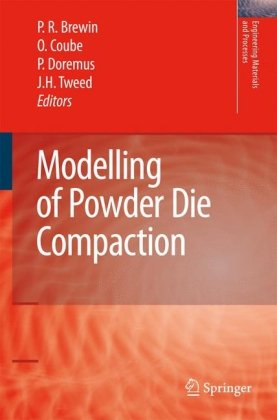

Most ebook files are in PDF format, so you can easily read them using various software such as Foxit Reader or directly on the Google Chrome browser.
Some ebook files are released by publishers in other formats such as .awz, .mobi, .epub, .fb2, etc. You may need to install specific software to read these formats on mobile/PC, such as Calibre.
Please read the tutorial at this link: https://ebookbell.com/faq
We offer FREE conversion to the popular formats you request; however, this may take some time. Therefore, right after payment, please email us, and we will try to provide the service as quickly as possible.
For some exceptional file formats or broken links (if any), please refrain from opening any disputes. Instead, email us first, and we will try to assist within a maximum of 6 hours.
EbookBell Team

0.0
0 reviewsManufacture of components from powders frequently requires a compaction step. This is widely used in the powder metallurgy, ceramic, hardmetal, magnet, pharmaceutical, refractory and other sectors to make anything from complex gears for cars to pills to dishwasher tablets. Development of the tooling to manufacture a component can be a long process with several iterations. A complementary approach is to use a model of the compaction process to predict the way that powder behaves during compaction and hence the loads that need to be applied to achieve compaction and the quality of the compacted part.
Modelling of the process of die compaction has been the subject of recent collaborative research from leading experts in Europe and this book presents a summary of the state of the art, taking examples from recent world-class research. In particular the book presents a number of case studies that have been developed to test compaction models. Full details of data required for input to compaction models of these case studies is given together with a survey of the techniques used to generate the data. Details are also given of methods to produce and assess components for validation of die compaction models. Inclusion of information on case studies then provides a reference for testing and validation of compaction models.
The reader will gain an appreciation of: